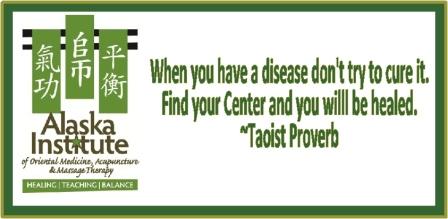Carpal Tunnel Syndrome - It’s painful, and those that suffer from it know it doesn’t take many flare ups before it has to be addressed.
What is Carpal Tunnel Syndrome (CTS)?
According to The American Massage Therapy Association, “ Carpel Tunnel is the inflammation or entrapment of nerves within the carpal tunnel of the anterior of the wrist”. (Michelle Vallet 3/7/14 Massage Therapy Journal)
What are the symptoms?
Severe burning sensation
Numbness with burning and pins and needles type pain like your hands and or wrists are asleep.
Wrist and hand weakness
Sometimes the pain can be limited to a couple of fingers.
What causes CTS?
There are several causes associated with CTS. Repetitive motion, such as working at a computer all day, or factory work that requires turning screws or other repetitive hand manipulation. I have known mechanics, massage therapists, potters, and wood workers that apply pressure to their wrist joints repetitively that have suffered from CTS.
Simply put, overuse and repetitive flexion and extension seem to be the biggest cause factors, although genetics - having small carpel tunnels and medical conditions and pathologies must certainly be considered.
How to treat CTS.
Western Medicine traditionally would assess a person, based on symptoms and level of pain.
The Mayo Clinic (mayoclinic.org) protocol is as follows:
Non surgical treatment:
Wrist splinting - Nocturnal splinting - where your wrist is aligned and unable to move and offer some relieve.
Nonsteroidal anti-inflammatory drugs - Ibuprofen, Advil etc. may offer some short term pain relief.
According to the Mayo Clinic there is no evidence that such drugs improve CTS.
Corticosteroids - where a doctor injects your carpel tunnel with a corticosteroid which relieves pain by decreasing inflammation and swelling which takes pressure of the median nerve.
In the surgery according to the Mayo clinic, whether the patient has endoscopic or open surgery the procedure essentially does the same thing.
The surgeon goes into the wrist and cuts the transverse carpal ligament pressing on the median nerve. The patient we be advised to avoid forceful wrist motions, may have to continue to wear wrist braces and the symptoms may never completely subside.
No where in the Mayo clinic literature did I read anything about assessing any other region of the arm or shoulder or neck where the median nerve may be affected by repetitive motion. So I went to the American Association of Orthopedic Surgeons ( orthoinfo.aaos.org) to see what they had to say:
Their information was very detailed and included an anatomy lesson with slides and a video.
The Physical examination portion of the site described the test the doctor would perform with the patient such as pressing down or tapping along the median nerve at the anterior side of the wrist to see if there is tingling or numbness (Tinel’s sign) Phalen’s test and several other tests. To my amazement all the tests were performed on the wrist only, and there is a quite a number of tests.
Nerve conduction studies, electromyogram, ultrasound, X-rays, and magnetic resonance imaging MRI.
The treatment plans were actually close to identical to the Mayo Clinic treatment plan.
Traditional Chinese Medicine - looks at CTS with a completely different set of tools. Traditional Chinese Medicine acknowledges the impingement of the median nerve. However according to Sarah Cherry - Practioner of Chinese Medicine -acupuncturist and herbalist (healthspaceclinics.com.au)There are two primary etiologies for carpal tunnel syndrome
2. Invasion of wind- cold.
Nourish the blood, soothe the sinews and course energy through the meridians.
This is done through accupuncture or pressure on local and distal points, Chinese herbs and moxabustion.
This site also suggested exercise and massage.
Is massage indicated?
Yes! According to Mary Bennett LMT and owner of Alleviate LLC in Bloomington Indiana. She explains that a good understanding of the area is very important so that you don’t harm the client.
According to Kanoa General owner of Blue Turtle Healing in New York “sound critical thinking is a must, as well as knowing how to apply massage techniques to help resolve the problem.”
General advises that if you don’t have experience in treating carpal tunnel that you seek advice from experienced professionals. Former instructors, your cohorts at the office or clinic.
Do a through intake especially if the client has been to a doctor for pain medication injections.
General states that he always assess the pronator teres, the shoulder and cervical region for compression along the median nerve.
According to General internal rotation of the shoulder and arm is typical.
Richard Garcia LMT from Peyton, Colorado emphasizes the importance of clear communication throughout the treatment process. What pressure helped? What exercises, stretches are being beneficial? Garcia also states that carpal tunnel is rarely strictly a wrist problem, “the probability of other muscles being out of balance is approximately 100 percent”.
Many people have found lasting relief from massage and exercises, as well as a CTM approach to healing in a harmonious way.
To summarize Carpel Tunnel Syndrome is a common (over 2 million cases documented annually, with 20 billion dollar pay out in workers compensation and over 450,000 surgeries annually according to OSHA and the US dept of labor) condition that has many treatment options available, so if this is a condition that you suffer from consider a Chinese Traditional Medicine approach, combined with the benefits of massage therapy, qigong and energy work before going under the knife.





No comments:
Post a Comment